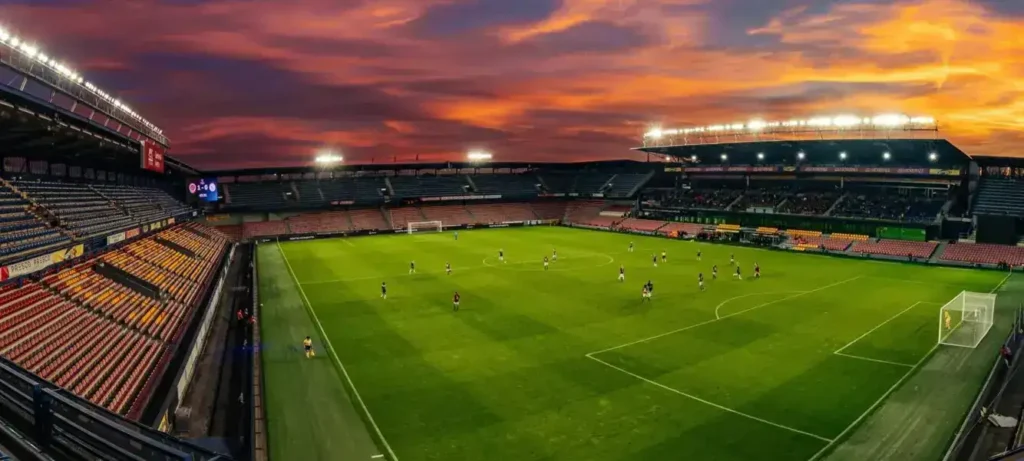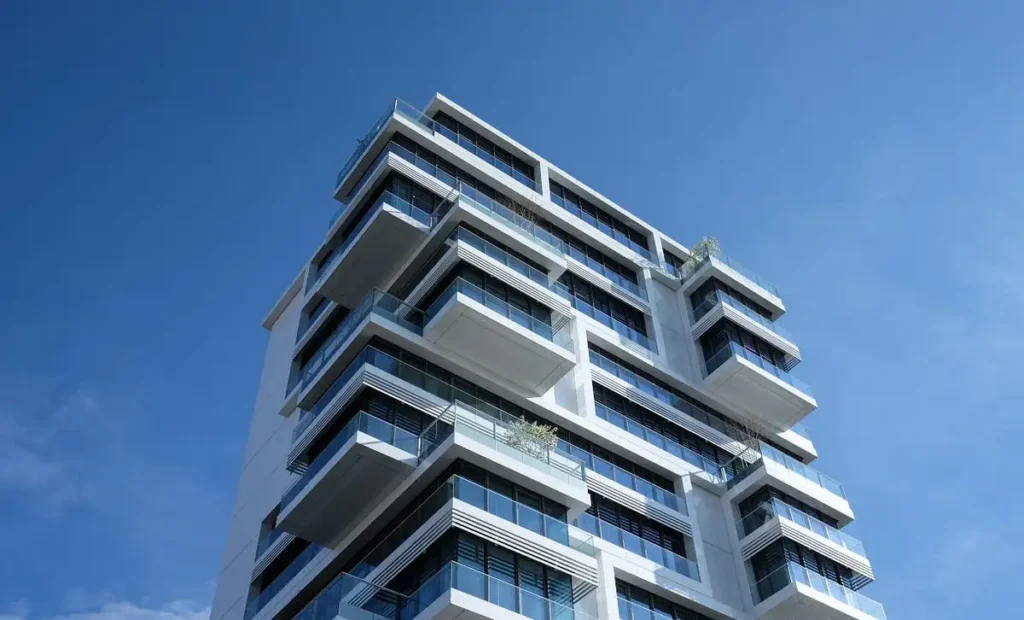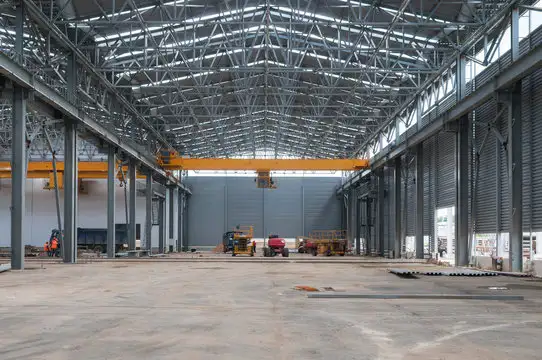Building a football stadium is a big project and requires a lot of money. Whether it’s a small local stadium or a massive NFL arena, many factors affect the price. Many big football stadiums in the world cost millions and billions for their construction.
This guide is for contractors who want to develop a big project such as a football stadium and need help planning. This article will help you to calculate the average cost to build a football stadium of different sizes. It is essential to understand the types of stadiums, seating, fields, and lighting before starting the project. So let’s dive into the article to understand all cost factors including in the construction of a football stadium.
Average Cost to Build a Football Stadium

FIFA regulations specify a minimum length of 100 yards (91.44 meters) and a minimum width of 50 yards (45.72 meters) for a football stadium. Assuming a rectangular field with these minimum dimensions, the area would be approximately 4,572 square yards or 41,305 square feet. It can accommodate around 10,000 to 50,000 spectators with multiple tiers of seating.
The average cost to build a football stadium of standard size (100×50) yards, can range between $1 million to $5 million. This cost would typically include the field, basic seating, lighting, and minimal facilities like restrooms and locker rooms. If the stadium includes more advanced features such as advanced lighting systems, or larger seating capacity, the price could rise significantly. However, the cost would vary with location. Stadiums in different countries have different standards.
Wembley, Camp Nou, Bernabéu, and Maracaña are some of the world’s most iconic football grounds. Opened in March 2007, Wembley reportedly cost $1.197 billion to construct. While Camp Nou (1957) and Bernabéu (1947) first opened over half a century ago, the recent renovations cost $972 million and $1.9 billion respectively. Even when a stadium is constructed, it requires renovation and maintenance before and after every event. For the 2022 World Cup in Qatar, organizers planned to spend around $3 billion on three stadium renovations and nine new stadiums.
Football Stadium Costs by Size
Stadium Type |
Size (Sq Yards) |
Capacity (spectators) |
Average Cost |
| Small Stadiums | 4,572 | 5,000-10,000 | $10 million – $50 million |
| Medium-Sized Stadiums | 5,000-6,000 | 15,000-30,000 | $50 million – $200 million |
| Large Stadiums | 6,000-8,000 | 30,000-50,000+ | $200 million – $1 billion |
| American Football Stadiums | 6,363 | 50,000 to 100,000 | $250 million – $2 billion |
| Rugby Union Stadiums | 7,000 square meters | 40,000 to 80,000 | $100 million – $500 million |
Types of Football Stadium
Open-Air Stadiums
Open-air stadiums are constructed without a roof, which means the field and seating areas are open to the weather. These stadiums are wonderful for playing games in natural sunlight. However, they can be affected by rain, wind, or snow. Open-air stadiums are frequently less expensive to construct because they don’t require complex roofing systems.
Retractable Roof Stadiums
Retractable roof stadiums provide flexibility. The roof can be opened or closed depending on the climate. This allows sports to continue in bad weather and also gives the experience of open-air sports when the weather is nice.
These stadiums are more expensive to build due to the advanced technology and structure required for the roof. They also offer stadium owners more options for hosting activities, like concert events, without worrying about rain or bad weather.
Bowl-Shaped Stadiums
Bowl-shaped stadiums are designed with curved seating that surrounds the field in a bowl-like form. This structure gives an excellent view of the field from almost every seat. Bowl-shaped stadiums are famous for large activities because they can maintain more people in a compact space. They create an exciting environment, as fans are closer to the action, and the sound of the fans can excite the players.
Temporary Stadiums
Temporary stadiums are built for particular activities, such as the FIFA World Cup or the Olympics. These stadiums are designed to be taken down or repurposed after the event is over. They are constructed with cost-effective materials and may be installed quickly. Temporary stadiums are ideal for occasions in places that don’t need an everlasting structure. This allows the organizers to meet the demand for huge crowds without a long-term investment.
Type Of Stadium |
Average Cost |
| Open-Air Stadiums | $50 million – $500 million |
| Retractable Roof Stadiums | $200 million – $1 billion |
| Bowl-Shaped Stadiums | $100 million – $500 million |
| Temporary Stadiums | $50 million – $200 million |
Seating Arrangements and Their Costs
General Admission Seating
General admission seating is the most common type of seating in a stadium. It offers seats that can be accommodated by anyone. These seats usually don’t come with special perks, like more legroom, or snacks on the seat. The cost to install general seatings is lower than all other premium seatings.
Premium Seating
Premium seating gives a more luxurious experience. These seats are regularly installed in the center of the stadium. They may also give more advantages like extra legroom, comfortable chairs, or access to special lounges. Premium seating costs more to build and maintain, however, it also brings in higher ticket prices.
Other Seating Arrangements
Standing Room Only (SRO): Standing Room Only (SRO) sections don’t have seats. Fans stand at some location in the stadium. It allows more people to fit in the stadium. This is normally the cheapest ticket choice. For the stadium, SRO sections are cheaper to build as no chairs are needed.
Family Sections: Family sections are designed for families who want to see the sport in a child-friendly surroundings. These spaces may also have additional safety for children.
Student Sections: Student sections are commonly reserved for students. These areas are regularly the loudest and most active audience of the stadium. Tickets are generally given at a discounted price, making it affordable for students.
Seating Arrangement |
Average Cost (per sq ft) |
| General Admission Seating | $20 – $50 |
| Premium Seating | $50 – $200 |
| Standing Room Only (SRO) | $10 – $25 |
| Family Sections | $20 – $80 |
| Student Sections | $20 – $50 |
Cost of Football Field
The price of building a football field consists of many components. First, you need to prepare the ground, which involves clearing and leveling the ground. Then, the field can be crafted from natural grass or artificial turf. Artificial turf generally costs more but is cheaper to maintain over the years. You also need to install a good drainage system to avoid water on the field.
Lining the field with paint for markings, and installing goalposts are also important. You should also add safety features such as padding around the posts, and protecting barriers or fences around the field. The cost can also include installing benches for the teams and sidelines for coaches and staff. Depending on the extent of the competition, an incredible scoreboard can also be mounted. The costs of all these factors would depend upon the size of the field while constructing a football stadium.
However, a standard football field can cost around $40,000 – $200,000.
Cost Factor |
Average Cost |
| Natural grass | $10,000 – $50,000 |
| Artificial turf | $20,000 – $100,000 |
| Drainage system | $10,000 – $50,000 |
| Irrigation system | $5,000 – $20,000 |
| Leveling and grading | $5,000 – $20,000 |
| Line markings | $1,000 – $5,000 |
| Goalposts | $1,000 – $5,000 |
Types of Lighting and Their Costs
Lighting Type |
Structure |
Average Cost |
| 4 Poles on 4 Corners | 5 units 1000 watts LED light on each pole | $20,000 – $40,000 |
| 4 Poles on Both Sides | 5 units of 1000 watts LED on each pole | $30,000 – $60,000 |
| 6 Poles on the Football Field | 3 units of 1000 watts LED on each pole | $25,000 – $50,000 |
| 8 Poles on the Football Field | 2 units of 1000 watts LED on each pole | $20,000 – $40,000 |
Other Cost Factors
Other cost factors that include building a football stadium are the following. Remember that these are just rough estimates. The total cost would depend upon your needs.
Cost Factor |
Average Cost (Per Sq Yard) |
| Permits | $5 – $20 |
| Seating lights | $2 – $5 |
| Parking lot | $10 – $25 |
| Bathrooms | $50 – $100 (per bathroom unit) |
| Cafeteria | $75 – $150 |
| Electric systems | $20 – $50 |
| Labor cost | $50 – $100 |
| Maintenance | $1 – $3 (annual maintenance cost per sq yard) |
Top 5 Most Expensive Football Stadiums in the World
Rank |
Stadium Name |
Country |
Opening Date |
Construction Cost |
| 1 | Allegiant Stadium | United States | 2020 | $1.2 billion |
| 2 | SoFi Stadium | United States | 2020 | $5 billion |
| 3 | Mercedes-Benz Stadium | United States | 2017 | $1.6 billion |
| 4 | Tottenham Hotspur Stadium | England | 2019 | $1.3 billion |
| 5 | MetLife Stadium | United States | 2010 | $1.6 billion |
Conclusion
The average cost to build a football stadium of standard size (100×50) yards, can range between $1 million to $5 million. This cost would typically include the field, basic seating, lighting, and minimal facilities like restrooms and locker rooms. The total cost would depend upon your location and type of stadium.
You should understand all the cost factors. It can include field size, seating arrangements, lighting poles, cafeteria, parking lot, and labor costs. It is recommended to plan the budget before starting the project to avoid any unexpected costs. Also, take some time to learn the budget of existing football stadiums in the world or your country.
FAQs
Q1. Cost to build a 10,000-seat stadium?
Building a 10,000-seat stadium can cost between $20 million to $40 million.
Q2. Cost to build a 5,000-seat stadium?
For a 5,000-seat stadium, the cost typically ranges from $10 million to $20 million
Q3. Cost to build a 40,000-seat stadium?
A larger stadium with 40,000 seats can cost anywhere from $100 million to $300 million or more.
Q4. How much does it cost to build a football stadium per yard?
On average, it could range from $2,000 to $10,000 per yard, including seating, field construction, lighting, and facilities.


